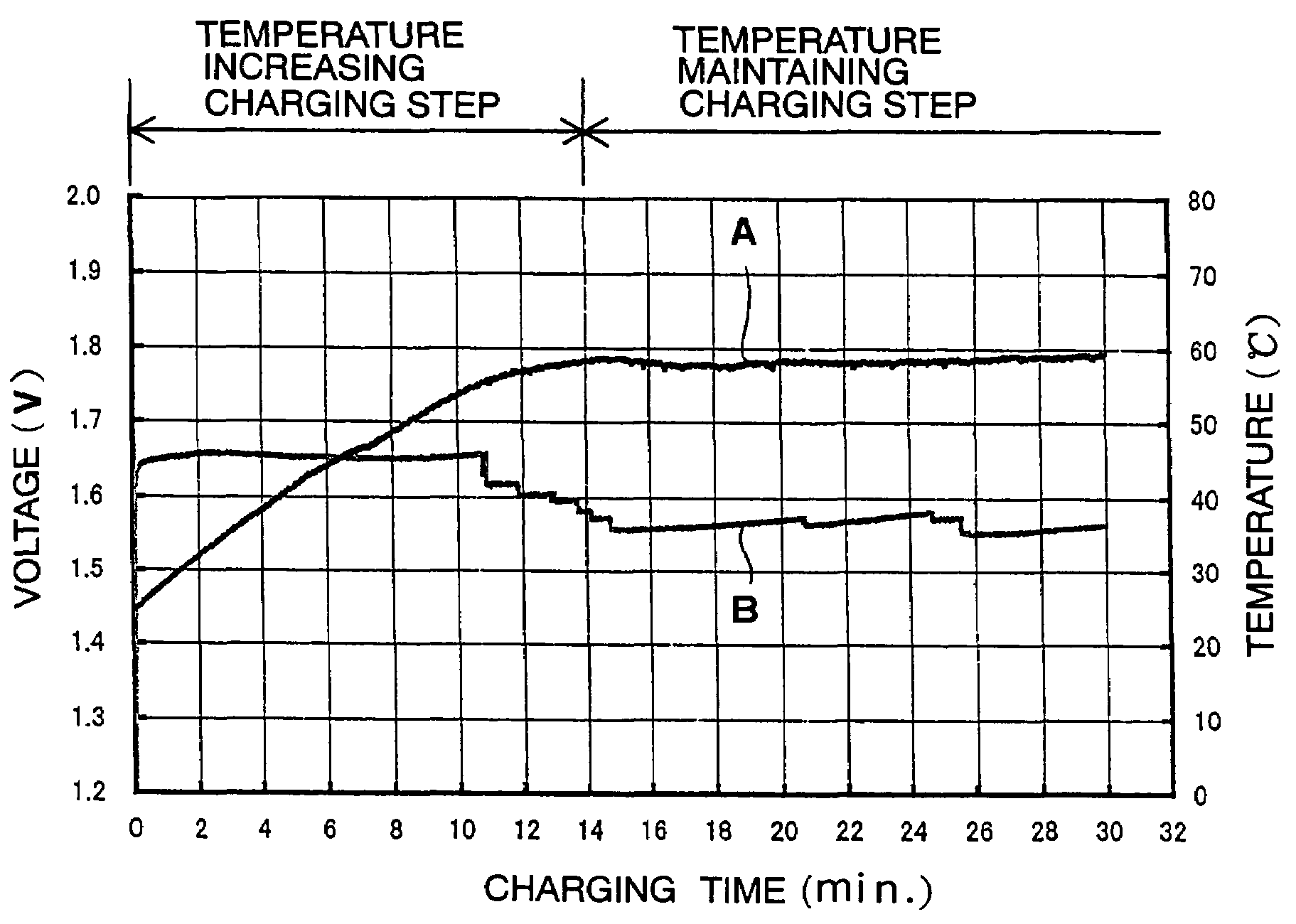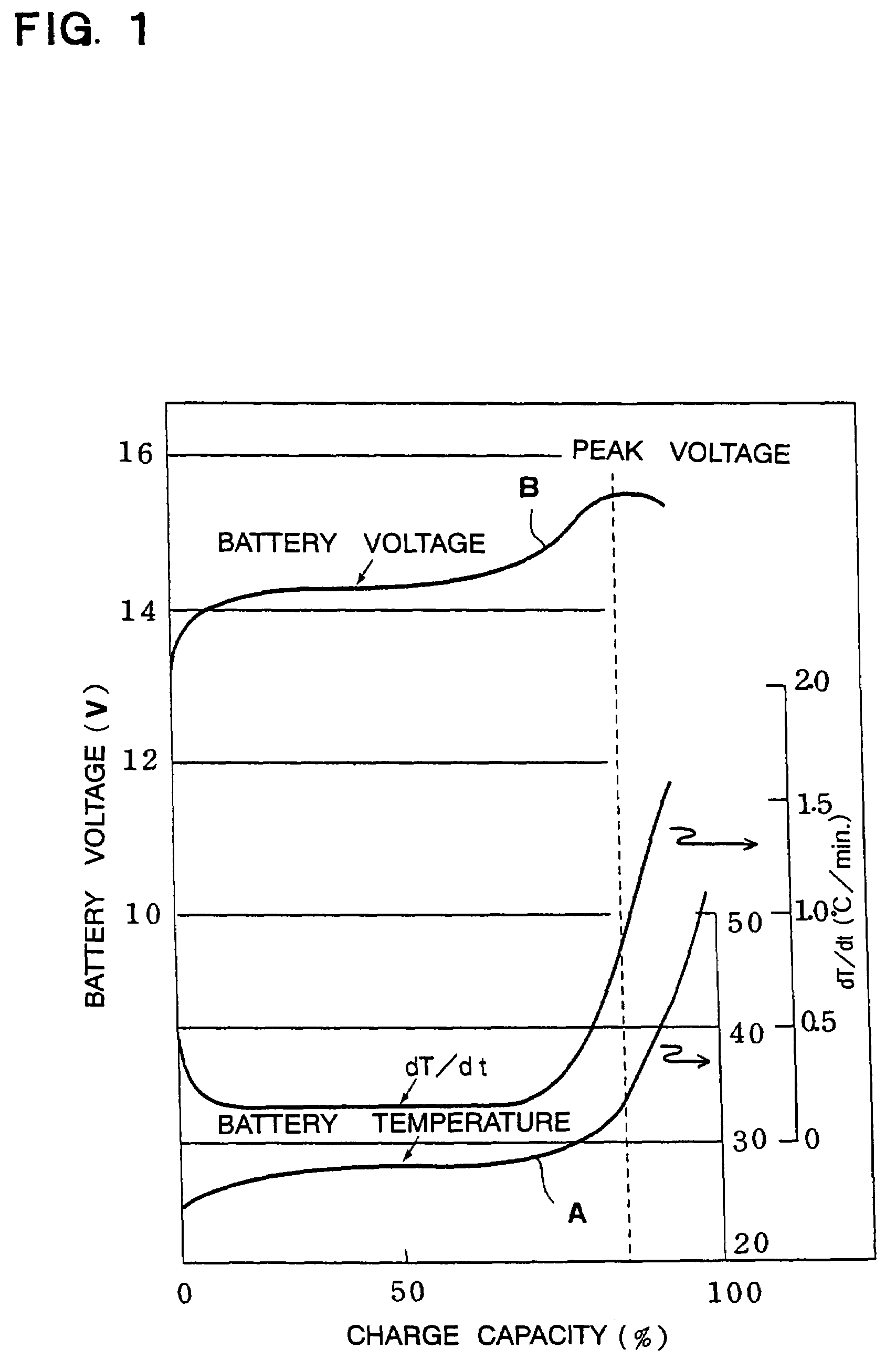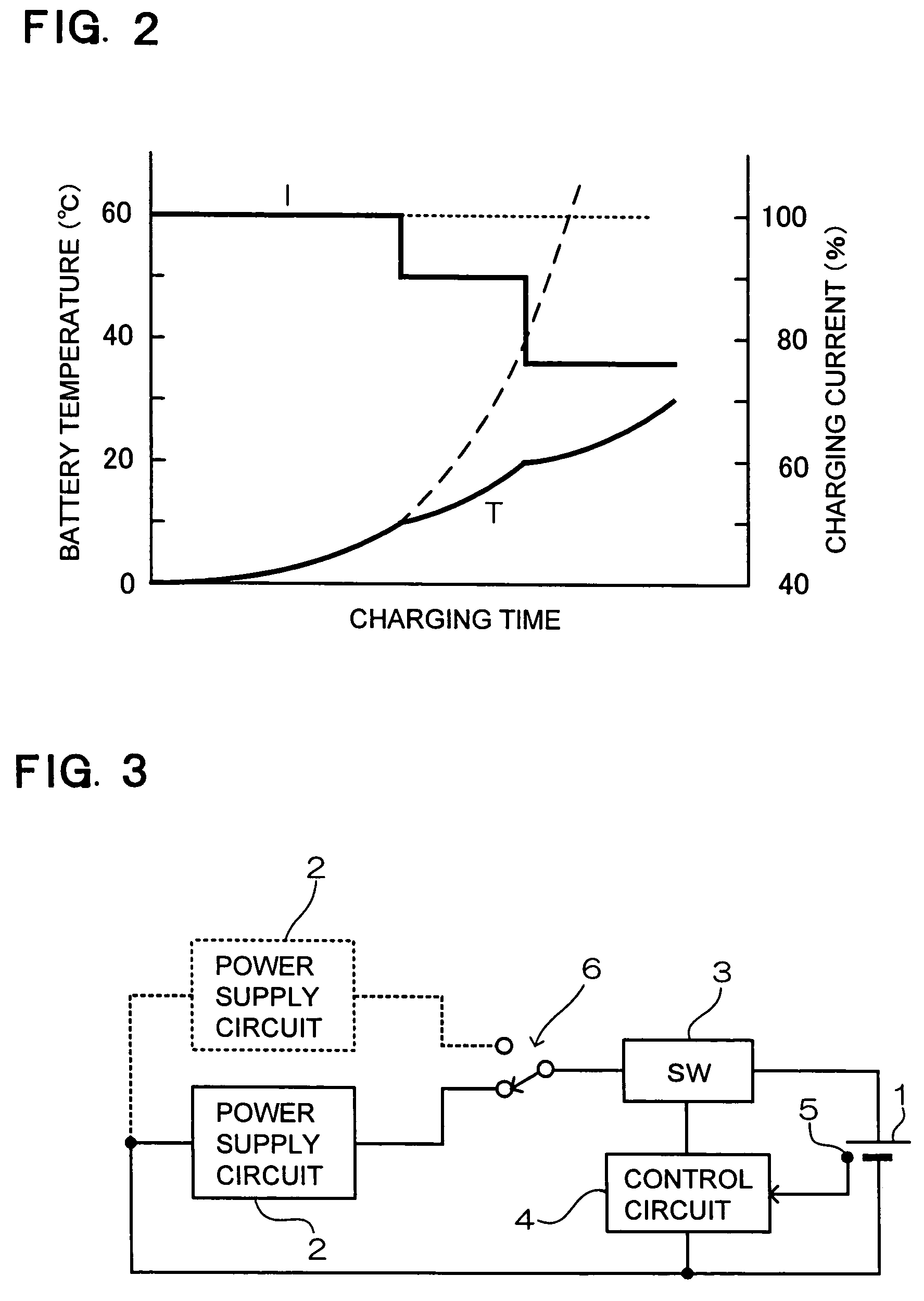Battery charging method
a battery and charging method technology, applied in the field of battery rapid charging, can solve the problem of not being able to rapidly charge a and achieve the effect of reducing the duty factor of the charging current, reducing the temperature rise of the battery, and rapid charging of the battery in a short tim
- Summary
- Abstract
- Description
- Claims
- Application Information
AI Technical Summary
Benefits of technology
Problems solved by technology
Method used
Image
Examples
Embodiment Construction
[0021]The charging circuit shown in FIG. 3 is provided with a power supply circuit 2 to supply charging current to charge the battery 1, a switching device 3 connected between the power supply circuit 2 and the battery 1 to regulate average charging current to the battery 1, a control circuit 4 to control charging current by switching the switching device 3 on and off, and a temperature sensor 5 to detect battery temperature and input a temperature signal to the control circuit 4.
[0022]When a standard size battery (TAN 1–4), such as size D, C, AA, AAA, is used, the temperature sensor 5 is disposed in intimate contact with the battery 1 when it is set in a battery charger adapter (not illustrated). When the battery 1 is a battery pack, the temperature sensor 5 is disposed inside the battery pack in intimate contact with the battery itself.
[0023]The graph of FIG. 4 shows battery temperature rise and battery voltage variation characteristics when a battery 1 is charged with the chargin...
PUM
| Property | Measurement | Unit |
|---|---|---|
| temperature | aaaaa | aaaaa |
| temperature | aaaaa | aaaaa |
| temperature | aaaaa | aaaaa |
Abstract
Description
Claims
Application Information
 Login to View More
Login to View More - R&D
- Intellectual Property
- Life Sciences
- Materials
- Tech Scout
- Unparalleled Data Quality
- Higher Quality Content
- 60% Fewer Hallucinations
Browse by: Latest US Patents, China's latest patents, Technical Efficacy Thesaurus, Application Domain, Technology Topic, Popular Technical Reports.
© 2025 PatSnap. All rights reserved.Legal|Privacy policy|Modern Slavery Act Transparency Statement|Sitemap|About US| Contact US: help@patsnap.com



